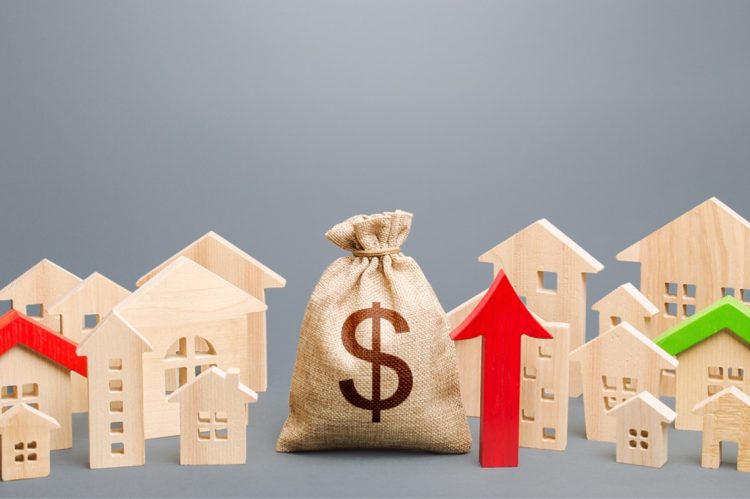Even as sales have slumped, home prices have remained mostly resilient and even beaten long-term averages, according to the latest data from the flagship S&P CoreLogic Case-Shiller Index, which tracked a 0.7% increase over last month. Prices are up 4.7% so far this year.
Though the report uses lagging data, and does not include the recent run-up in mortgage rates, it is also a sign that this year’s market is still generally stable, even as many potential buyers remain priced out.
The major metro composites, which track prices across 10 and 20 major cities, posted higher than average gains, 0.9% from the previous month. Prices rose in every single city, with no major weaknesses as gains were broadly distributed across regions.
On a year-over-year measure, Chicago, Illinois, saw the biggest increase in prices, up 4.2%, followed by Cleveland, Ohio (4.1%), and New York City, New York (3.4%). Ten out of the 20 sampled metros are now positive on a year-over-year basis, with major Western metros still digging out of correction territory.
Overall prices are now essentially flat, down a fractional 0.02% year-over-year, on track for significant gains when many predicted price decreases. Other, more leading indicators and surveys—including RISMedia’s Broker Confidence Index (BCI) and the National Association of Homebuilders’ (NAHB) Homebuilder Confidence Index (HBI)—have remained far above 2022 levels, despite headwinds.
The most recent BCI reading came in at 6.7 out of 10, while the HBI rated 50 out of 100.
The complete data for the 20 markets measured by S&P CoreLogic Case-Shiller Index:
Atlanta, Georgia
May/June: 1.3%
Year-Over-Year: 2.1%
Boston, Massachusetts
May/June: 1.3%
Year-Over-Year: 0.9%
Charlotte, North Carolina
May/June: 1.2%
Year-Over-Year: 1.7%
Chicago, Illinois
May/June:1.4%
Year-Over-Year: 4.2%
Cleveland, Ohio
May/June: 1.5%
Year-Over-Year: 4.1%
Dallas, Texas
May/June: 0.7%
Year-Over-Year: -4.1%
Denver, Colorado
May/June: 0.4%
Year-Over-Year: -4.4%
Detroit, Michigan
May/June: 1.1%
Year-Over-Year: 2.2%
Las Vegas, Nevada
May/June: 0.9%
Year-Over-Year: -8.2%
Los Angeles, California
May/June: 0.9%
Year-Over-Year: -1.8%
Miami, Florida
May/June: 1.4%
Year-Over-Year: 2.5%
Minneapolis, Minnesota
May/June: 1.0%
Year-Over-Year: 0.7%
New York, New York
May/June: 1.1%
Year-Over-Year: 3.4%
Phoenix, Arizona
May/June: 1.1%
Year-Over-Year: -7.5%
Portland, Oregon
May/June: 0.8%
Year-Over-Year: -4.2%
San Diego, California
May/June: 1.1%
Year-Over-Year: -2.5%
San Francisco, California
May/June: 0.1%
Year-Over-Year: -9.7%
Seattle, Washington
May/June: 0.8%
Year-Over-Year: -8.8%
Tampa, Florida
May/June: 0.5%
Year-Over-Year: -0.9%
Washington, D.C.
May/June: 0.7%
Year-Over-Year: 0.6%
The takeaway:
“The S&P CoreLogic Case-Shiller Home Price Index shows that prices turned a corner in June, with the index down just -0.02% year-over-year. The June data signal that the summer housing market was strong, with eager buyers and very limited supply. However, the housing market we’re in now is different from the market we had in June, which is the month the most recent Case Shiller data is based on. Mortgage rates are up by more than 60 basis points since the beginning of June and existing-home sales this summer are down to their lowest levels since 2010.
“What does all that mean for home prices this fall? June might be a turning point for prices, but it’s very likely we’ll see an about face this fall. Given the robust economy and low supply, don’t expect a major price correction, but it’s likely we’ll see modest year-over-year price declines in many markets this fall.” – Dr. Lisa Sturtevant, Bright MLS chief economist
“As we’ve noted previously, the recovery in home prices is broadly based. Prices rose in all 20 cities in June, both before and after seasonal adjustment. Over the last 12 months, 10 cities show positive returns. Otherwise said, half the cities in our sample now sit at all-time high prices.
“June is the fifth consecutive month in which home prices have increased across the U.S. With 2023 half over, the National Composite has risen 4.7%, which is slightly above the median full calendar year increase in more than 35 years of data. We recognize that the market’s gains could be truncated by increases in mortgage rates or by general economic weakness, but the breadth and strength of this month’s report are consistent with an optimistic view of future results.”–Craig J. Lazzara, managing director at S&P DJI












